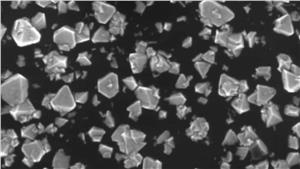Perovskite and Silicon: A Tandem Revolution in Solar Technology
![]()
![]() A review of the potential of combining silicon solar cells with perovskite materials highlights how to scale up this technology. Credit: 2024 KAUST; Heno Hwang In 2009, researchers demonstrated that solar cells made from perovskites, specifically methylammonium lead bromide and methylammonium lead iodide, possess superior light-absorption capabilities. These materials, known as lead halide perovskites or simply perovskites, marked the beginning of a novel avenue in photovoltaic research. Although the initial efficiency of perovskite solar cells was relatively low, it laid the groundwork for future advancements in this field. Today, it is clear that future solar cells are likely to include these perovskites in combination with traditional silicon. Erkan Aydin, Stefaan De Wolf, and a team from KAUST have reviewed how this tandem technology can move out of the laboratory and be scaled up for commercial fabrication. The excitement over perovskites stems from the fact that they can be created at low temperatures and are easily deposited on most surfaces, including flexible ones, making them lighter, more adaptable, and potentially cheaper than silicon solar panels.
A review of the potential of combining silicon solar cells with perovskite materials highlights how to scale up this technology. Credit: 2024 KAUST; Heno Hwang In 2009, researchers demonstrated that solar cells made from perovskites, specifically methylammonium lead bromide and methylammonium lead iodide, possess superior light-absorption capabilities. These materials, known as lead halide perovskites or simply perovskites, marked the beginning of a novel avenue in photovoltaic research. Although the initial efficiency of perovskite solar cells was relatively low, it laid the groundwork for future advancements in this field. Today, it is clear that future solar cells are likely to include these perovskites in combination with traditional silicon. Erkan Aydin, Stefaan De Wolf, and a team from KAUST have reviewed how this tandem technology can move out of the laboratory and be scaled up for commercial fabrication. The excitement over perovskites stems from the fact that they can be created at low temperatures and are easily deposited on most surfaces, including flexible ones, making them lighter, more adaptable, and potentially cheaper than silicon solar panels. Advantages of Tandem Cells
"Both perovskite and silicon solar cells have proved to be highly efficient; however, using them both in tandem in a single cell enables better utilization of sunlight by minimizing the losses that are not converted to electrical charge," says Aydin. Aydin and his co-authors have charted the developments in tandem solar-cell fabrication that enable increases in size and power conversion efficiency. But they highlight that other approaches are needed to make them commercially viable. Challenges in Scaling Up
One challenge, for example, is that the topography of the silicon surface affects the deposition of the perovskite. The best-performing laboratory devices to date have used spin coating of a perovskite-precursor ink combined with an antisolvent treatment. However, this approach is not suited to commercial processing as it is hard to scale up and wastes a lot of material. Aydin and co-authors discuss the pros and cons of alternative approaches, such as slot-die coating and physical vapor deposition. Another consideration is that moisture and heat and their combination with light accelerate the degradation of perovskite subcells. The authors detail various accelerated aging and real environment tests on perovskite/silicon tandem solar cells and underline the necessity of focused efforts in this direction. These help predict the reliability and lifetime of perovskite/silicon modules in a range of harsh environments. "I think the biggest challenge is increasing the reliability of the perovskites subcells," says Aydin. "Research activities we had so far have indicated that we have not yet reached any fundamental limit, so we need more concentrated effort to realize long-term stable devices." The proof-of-concept tandem modules have been introduced already. However, given the significant practical challenges, it is still unclear when perovskite/silicon tandems will reach market grade. However, the success in developing efficient commercial solar cells is vital for meeting the increasing demand for energy while reducing environmental impact. Reference: "Pathways toward commercial perovskite/silicon tandem photovoltaics" by Erkan Aydin, Thomas G. Allen, Michele De Bastiani, Arsalan Razzaq, Lujia Xu, Esma Ugur, Jiang Liu and Stefaan De Wolf, 12 January 2024, Science. DOI: 10.1126/science.adh3849


 A review of the potential of combining silicon solar cells with perovskite materials highlights how to scale up this technology. Credit: 2024 KAUST; Heno Hwang In 2009, researchers demonstrated that solar cells made from perovskites, specifically methylammonium lead bromide and methylammonium lead iodide, possess superior light-absorption capabilities. These materials, known as lead halide perovskites or simply perovskites, marked the beginning of a novel avenue in photovoltaic research. Although the initial efficiency of perovskite solar cells was relatively low, it laid the groundwork for future advancements in this field. Today, it is clear that future solar cells are likely to include these perovskites in combination with traditional silicon. Erkan Aydin, Stefaan De Wolf, and a team from KAUST have reviewed how this tandem technology can move out of the laboratory and be scaled up for commercial fabrication. The excitement over perovskites stems from the fact that they can be created at low temperatures and are easily deposited on most surfaces, including flexible ones, making them lighter, more adaptable, and potentially cheaper than silicon solar panels.
A review of the potential of combining silicon solar cells with perovskite materials highlights how to scale up this technology. Credit: 2024 KAUST; Heno Hwang In 2009, researchers demonstrated that solar cells made from perovskites, specifically methylammonium lead bromide and methylammonium lead iodide, possess superior light-absorption capabilities. These materials, known as lead halide perovskites or simply perovskites, marked the beginning of a novel avenue in photovoltaic research. Although the initial efficiency of perovskite solar cells was relatively low, it laid the groundwork for future advancements in this field. Today, it is clear that future solar cells are likely to include these perovskites in combination with traditional silicon. Erkan Aydin, Stefaan De Wolf, and a team from KAUST have reviewed how this tandem technology can move out of the laboratory and be scaled up for commercial fabrication. The excitement over perovskites stems from the fact that they can be created at low temperatures and are easily deposited on most surfaces, including flexible ones, making them lighter, more adaptable, and potentially cheaper than silicon solar panels. 







